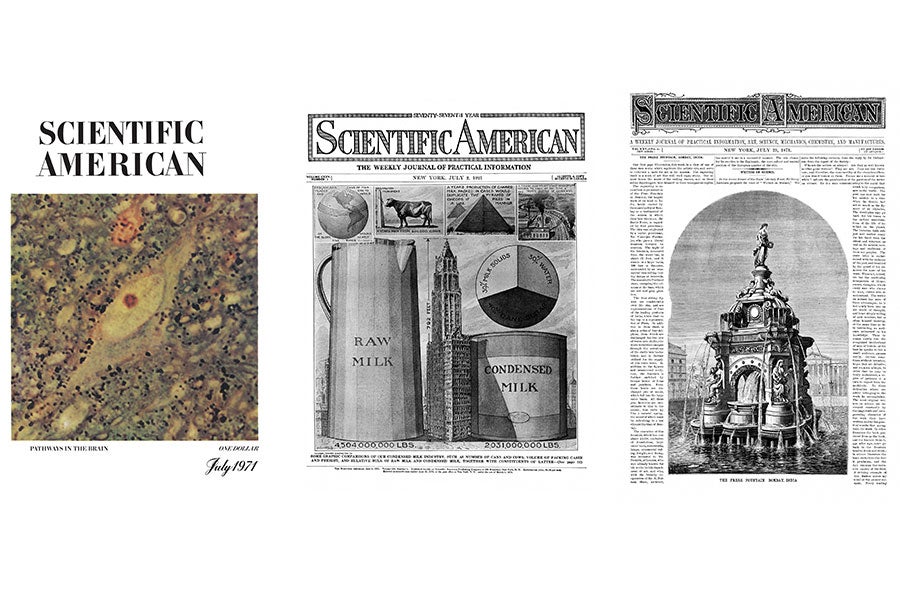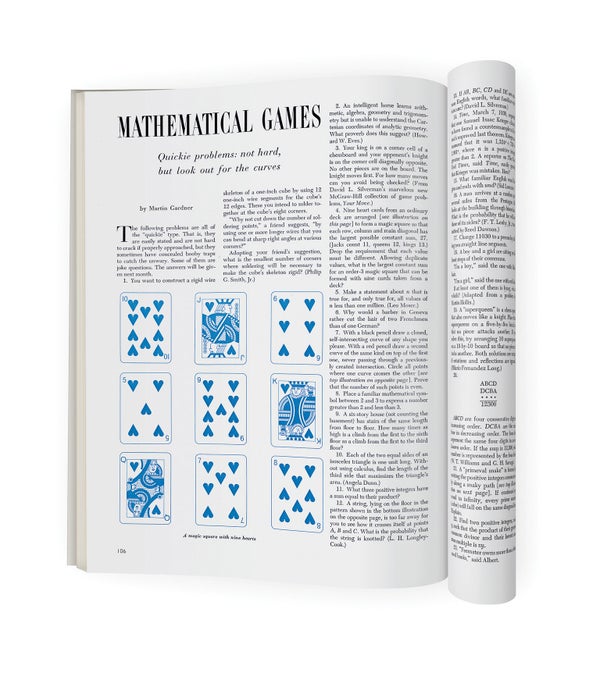1971
Virus Control
“To date the only clinically practical way to control virus diseases is to administer a vaccine that stimulates the body to form antibodies against that virus. Another possibility is to rely on what is apparently the cell's own first line of defense: interferon. Our group at the Merck Institute concentrated on the active substance poly I:C. It shows considerable promise for exploiting the interferon mechanism. After some final tests to rule out the danger of autoimmune disorders, poly I:C will be ready for cautious trials in humans for preventing infections, such as the common cold, that are caused by viruses.”
On supporting science journalism
If you're enjoying this article, consider supporting our award-winning journalism by subscribing. By purchasing a subscription you are helping to ensure the future of impactful stories about the discoveries and ideas shaping our world today.
In 2021 researchers have been conducting human trials with interferon as a treatment for COVID-19, but results are unclear.
1921
Immortality for Humans
“A skillful surgeon has kept alive, by artificial means, outside the animal, a bit of tissue from the heart of an embryo chick for more than eight years. The remarkable thing is that there is no doubt that if properly cared for it will live on forever. In connection with other scientists' work its meaning becomes clear: There is no apparent ‘aging' of individual cells. While we are theoretically immortals, the reason we are not actually so is because if one part of the body fails, there is failure in other parts dependent on it, and the whole machine collapses. But it would appear that so long as we can prevent a breakdown of any one part, we shall continue to be young and vigorous. Perhaps the day is not far away when most of us may reasonably anticipate a hundred years of life. And if a hundred why not a thousand?”
Marie Curie's Weighty Honor
“Filled with honors, Mme. Curie sailed on June 25th on the Olympic, on which was carried her precious gram of radium. The Bureau of Standards provided a beautiful mahogany case lined with lead and steel. Although not large it weighs 130 pounds. In the center are several small compartments, formed of lead and surrounded by steel, each one sized for a small glass tube containing a portion of the radium salts. The lid is inlaid with a gold plate, handsomely marked with the following inscription: ‘Presented by the President of the United States on behalf of the women of America to Madame Marie Sklodowska Curie in recognition of her transcendent service to science and humanity in the discovery of radium. The White House, May 20, 1921.'”
1871
Calculus Is Good for You
“It is admitted by all metaphysicians and educators that the calculus brings into play more faculties of the mind than any other branch of learning. Recognizing this fact, professors should consider their institution a mental gymnasium, which gives the mind exercise that enables it to perform its highest destiny. Herein is the value of solving problems in the calculus, and indeed of all other branches of pure mathematics—that by dealing in abstract ideas, they prepare the mind to apply itself vigorously to profound or complicated subjects connected with the realities of life.”
Backyard Gas Well
“In every room in a mansion in Pennsylvania was a gas well apparatus, and fires could at any moment be lighted. In the kitchen was a large and complete range. Nothing is employed in that house for heating and illumination, except this gas. The well is in the backyard, sufficiently removed from the mansion, and is covered by a small house. The bore is five hundred and twenty feet deep, lined with iron pipe, and furnished with a safety valve.”

